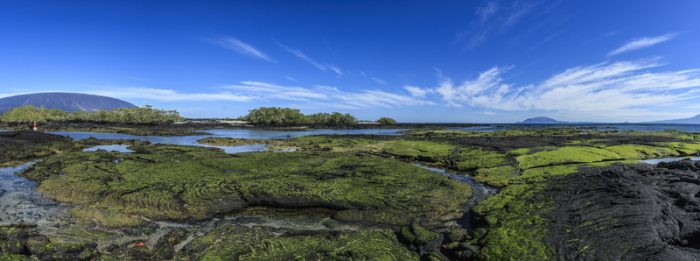One of the hardest parts of any wildlife expert's job is reporting that a species is becoming extinct.
To classify an animal as 'extinct' is to say that despite months and even years of searching, that creature appears to be gone forever. Of course, there is always the hope that somehow, some way, the animal will reappear. But it rarely happens.
So you can imagine the joy that many people are feeling about this news.
Peek-a-boo! (Getty Embed)
The Fernandina Giant Tortoise—a species of tortoise that was thought to have become extinct 110 years ago—has been found alive!
A unique part of the world
So where to begin? This tortoise is a species that lives on the Galapagos islands. For fans of nature, this remote place in the Pacific Ocean is a special one.
An illustration of Charles Darwin visiting the Galapagos in 1835. His discoveries there changed science. (Getty Embed)
These islands are home to many species that are found nowhere else in the world. When naturalist Charles Darwin visited the islands in 1835, he saw these unique animals and it got him thinking. How did these animals become so different here? The only way would be if all animals slowly change—or evolve—over time based on the particular surroundings and needs of their own habitat.
This led to him proposing the theory of evolution, which still stands as a huge concept in modern biology and science. And in 1979, the United Nations recognized the Galapagos as a UNESCO World Heritage Site—a special place worth protecting.
What have you been up to, buddy?
Conservationists talk about their amazing discovery. (Getty Embed)
Of course, 1979 appeared to have come too late for the Fernandina Giant Tortoise. Fernandina Island is home to La Cumbre, a powerful active volcano. It was thought that continued eruptions had killed off the rare tortoise species, which hadn't been seen since 1906.
Then, during an expedition by the Giant Tortoise Restoration Initiative (GTRI), this lone adult female was discovered. She is believed to be around 100 years old, too. That is one hardy creature!
So what's next? First, biologists are running tests to be sure that this is indeed the species they hope it is. At the same time, conservationists are going to try and find others like her. Ultimately, they hope to start a breeding program that will build this animal's numbers up and create a newly stable population.
Watch conservationists talk about the exciting news below.
 Fernandina Island is the home of this once-extinct, now ultra-rare species of giant tortoise. (© Andres Court - Dreamstime.com)
Fernandina Island is the home of this once-extinct, now ultra-rare species of giant tortoise. (© Andres Court - Dreamstime.com)










That critter was well hidden for sure. That’s so wonderful!
Ho-ray! 😀
I can not watch the video 🙁